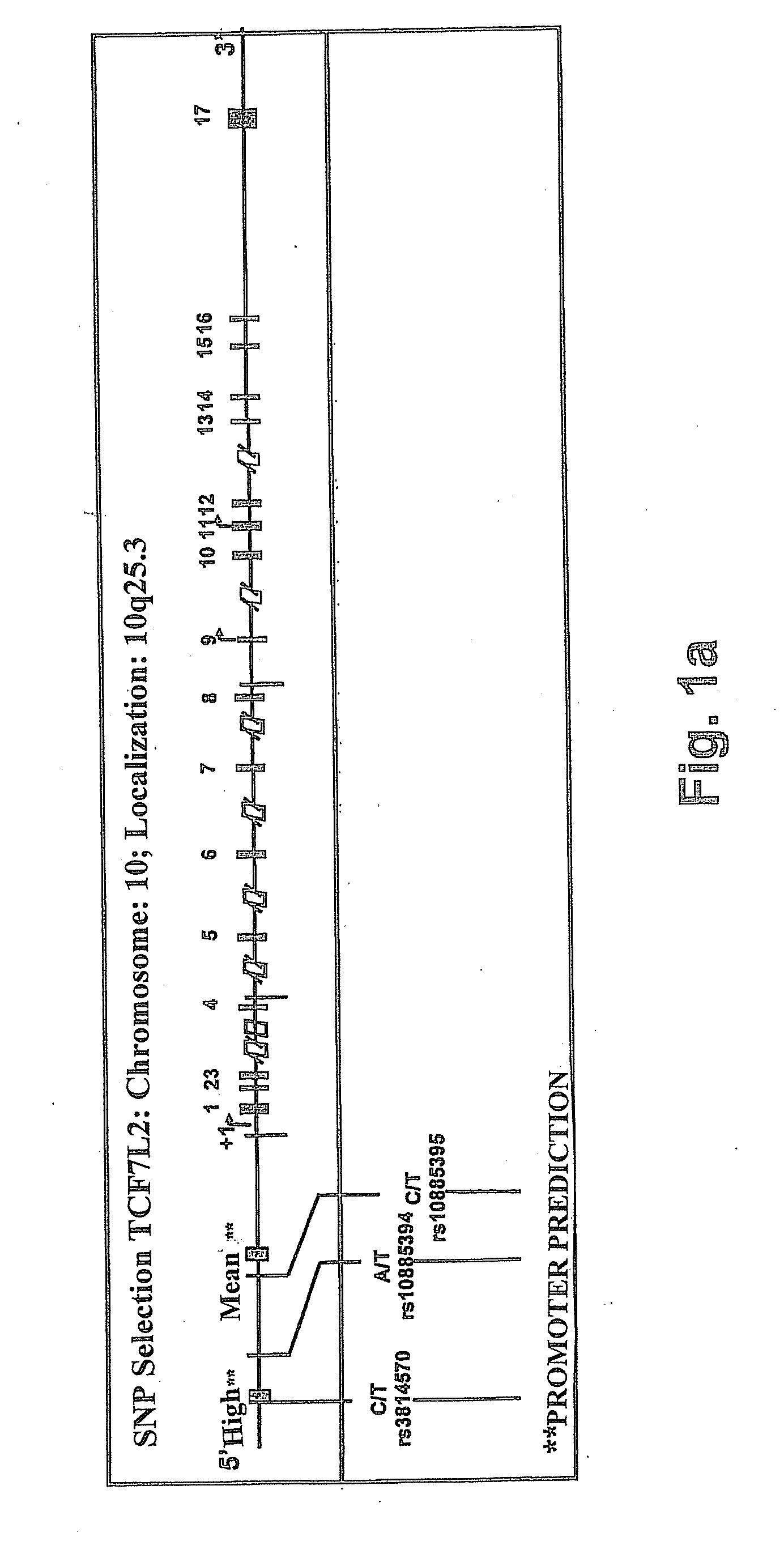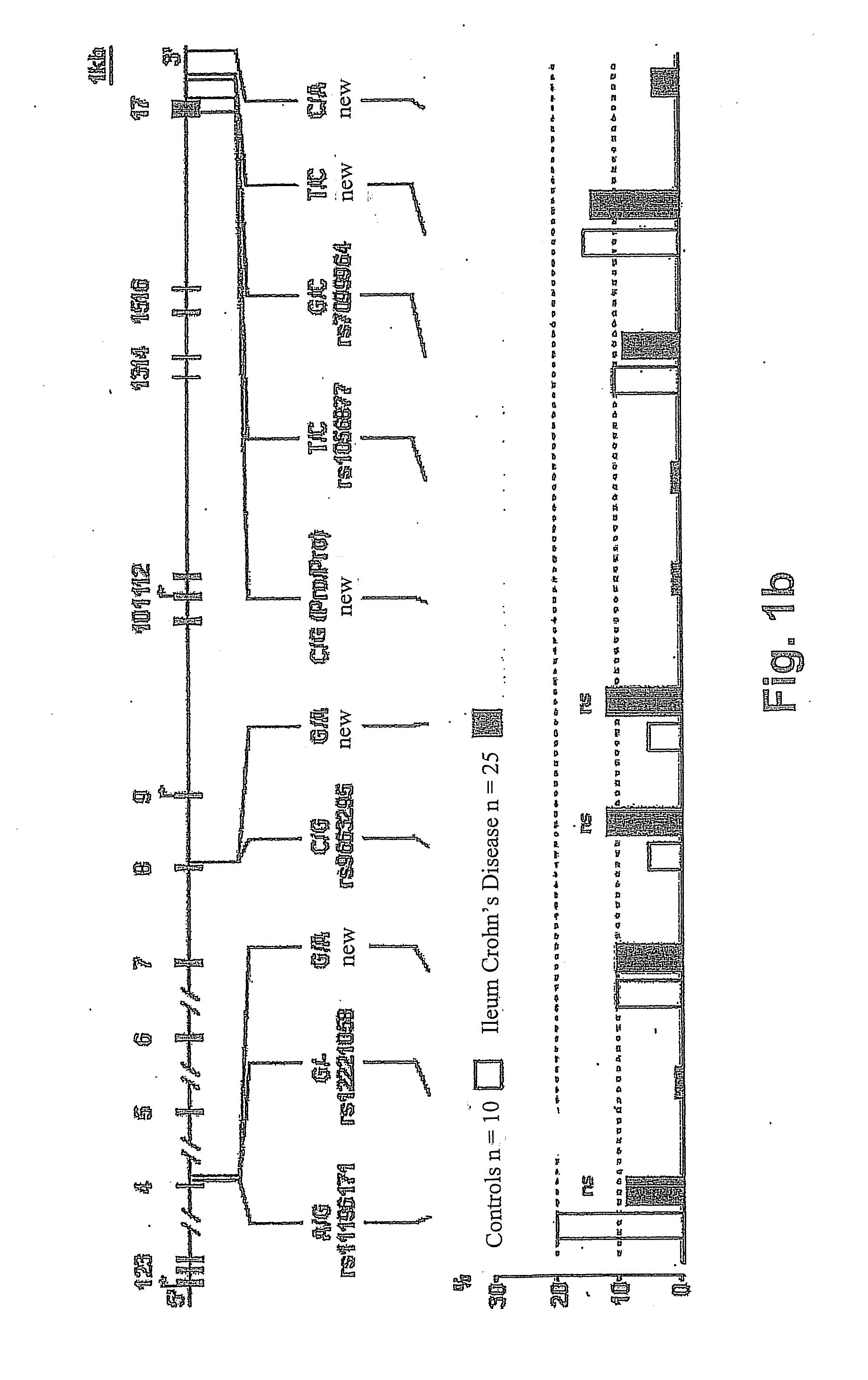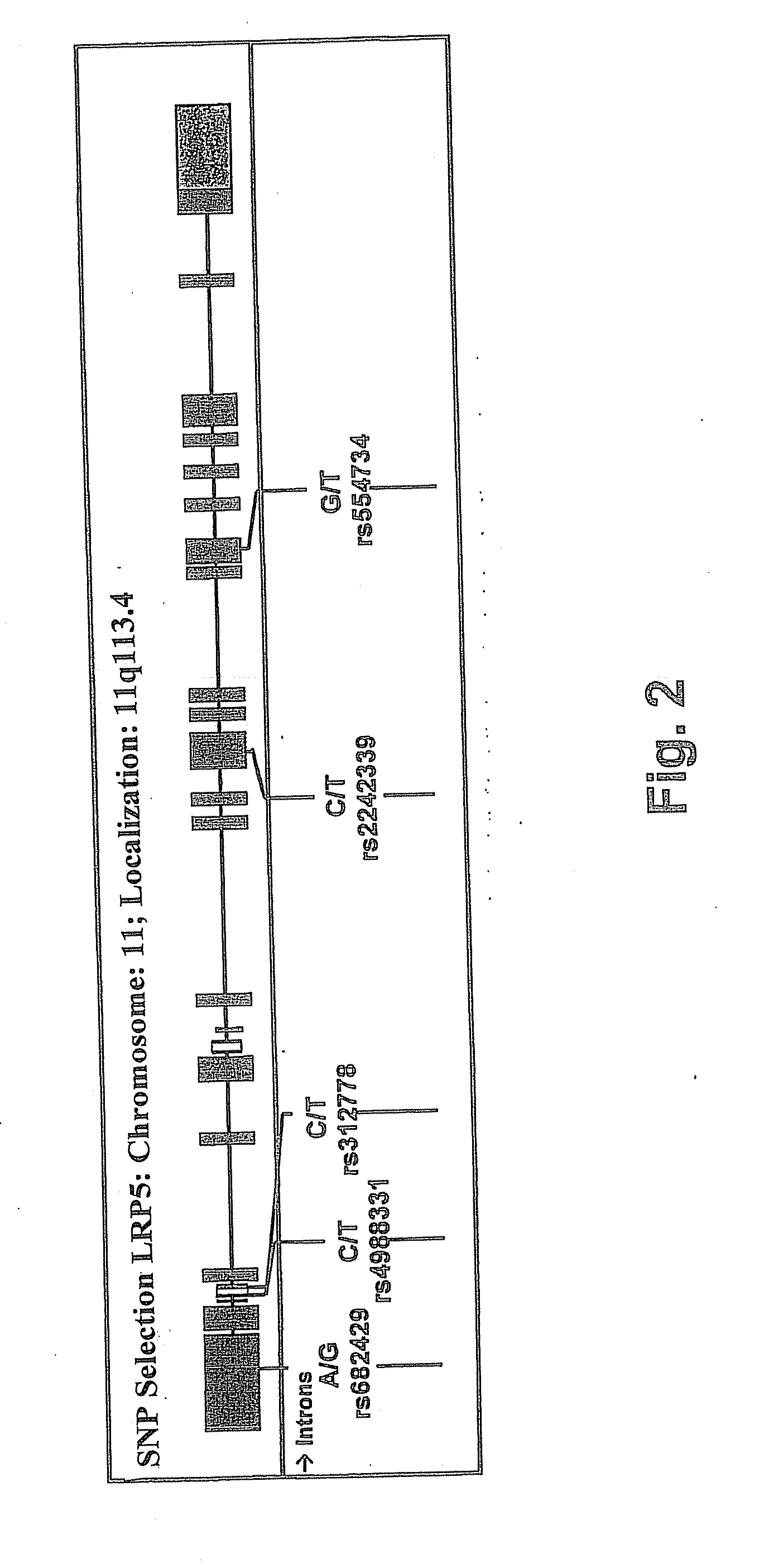Method for determining the predisposition for crohn's disease
- Summary
- Abstract
- Description
- Claims
- Application Information
AI Technical Summary
Benefits of technology
Problems solved by technology
Method used
Image
Examples
example 1
Material and Methods
a) Patients and Human Materials
[0086]For the genetic analysis, DNA specimens were taken from different patient cohorts: Patients of Caucasian descent having Crohn's Disease (N=259) or ulcerative colitis (N=149) from the University Clinic at Vienna; healthy blood donors of Caucasian descent not related to Group 1, from Stuttgart (N=833). For additional tests, DNA samples were collected from the following patient groups: Patients of Caucasian descent having Crohn's Disease (N=277) or ulcerative colitis (N=74) as well as healthy donors (N=242) of the University of Leuven, Belgium; a third cohort of patients of Caucasian descent having Crohn's Disease (N=473) or ulcerative colitis (N=562) as well as healthy donors (N=324) from Oxford. According to the classification of Montreal, three subgroups were defined for patients having Crohn's Disease: Patients having disease exclusively of the small intestine (L1), patients having disease exclusively of the large intestine (...
example 2
Tcf-4
a) SNP Selection and Haplotypes
[0093]To investigate the possible genetic linkage of Tcf-4 with ileum-CD, SNP's were screened with respect to the sequencing of 2.1 kb of the 5′ flanking region of Tcf-4, namely in a random group of 10 ileum CD patients and 10 healthy controls. In this assumed promoter region (see FIG. 1) eight SNP's were found, of which three (rs3814570, rs10885394, rs10885395) were in linkage disequilibrium (LD) in both the patient group and the control group. In the control group, two out of ten individuals were heterozygous with respect to these variants; in patients having ileum CD, six out of ten individuals were heterozygous. Based on these results, a well-investigated cohort of patients having CD as well as healthy controls from Vienna (Austria) were examined. Both in the control and in the CD group, an LD was found between the three SNP's, via which a new haplotype block was defined (see FIG. 2).
[0094]An in silico analysis of the promoter and the transcri...
example 3
LRP6
Material and Methods
[0105]As samples, the same material was used as in Example 1, and the same methods were used for their investigation as in Example 1.
a) LRP6
[0106]The selection of LRP6 as the candidate gene was based on its specific and tissue-independent reduction in patients that have fallen ill. In order to cover variants, associated with the disease, in the intron region as well as the 3′ region and the 5′ region in the analysis, SNP's of the coding region and tag SNP's were included. The selection of tag SNP's was carried out using a “pairwise method”, by using the tag SNP selection function of the international “HapMap” Project Homepage (http: / / hapmap.ncbi.nlm.nih.gov / index.html.en). The aim of the international HapMap Project is to cartograph the haplotypes of the human genome. In order also to include promoter variants and other SNP's up or downstream of LRP6, we zoomed out outside the gene region (10% ca. 7.3 kb (kb=kilobases).
b) LPR6 Genotyping
[0107]Leucocyte DNA wa...
PUM
| Property | Measurement | Unit |
|---|---|---|
| Fraction | aaaaa | aaaaa |
| Fraction | aaaaa | aaaaa |
| Fraction | aaaaa | aaaaa |
Abstract
Description
Claims
Application Information
 Login to View More
Login to View More - R&D
- Intellectual Property
- Life Sciences
- Materials
- Tech Scout
- Unparalleled Data Quality
- Higher Quality Content
- 60% Fewer Hallucinations
Browse by: Latest US Patents, China's latest patents, Technical Efficacy Thesaurus, Application Domain, Technology Topic, Popular Technical Reports.
© 2025 PatSnap. All rights reserved.Legal|Privacy policy|Modern Slavery Act Transparency Statement|Sitemap|About US| Contact US: help@patsnap.com



